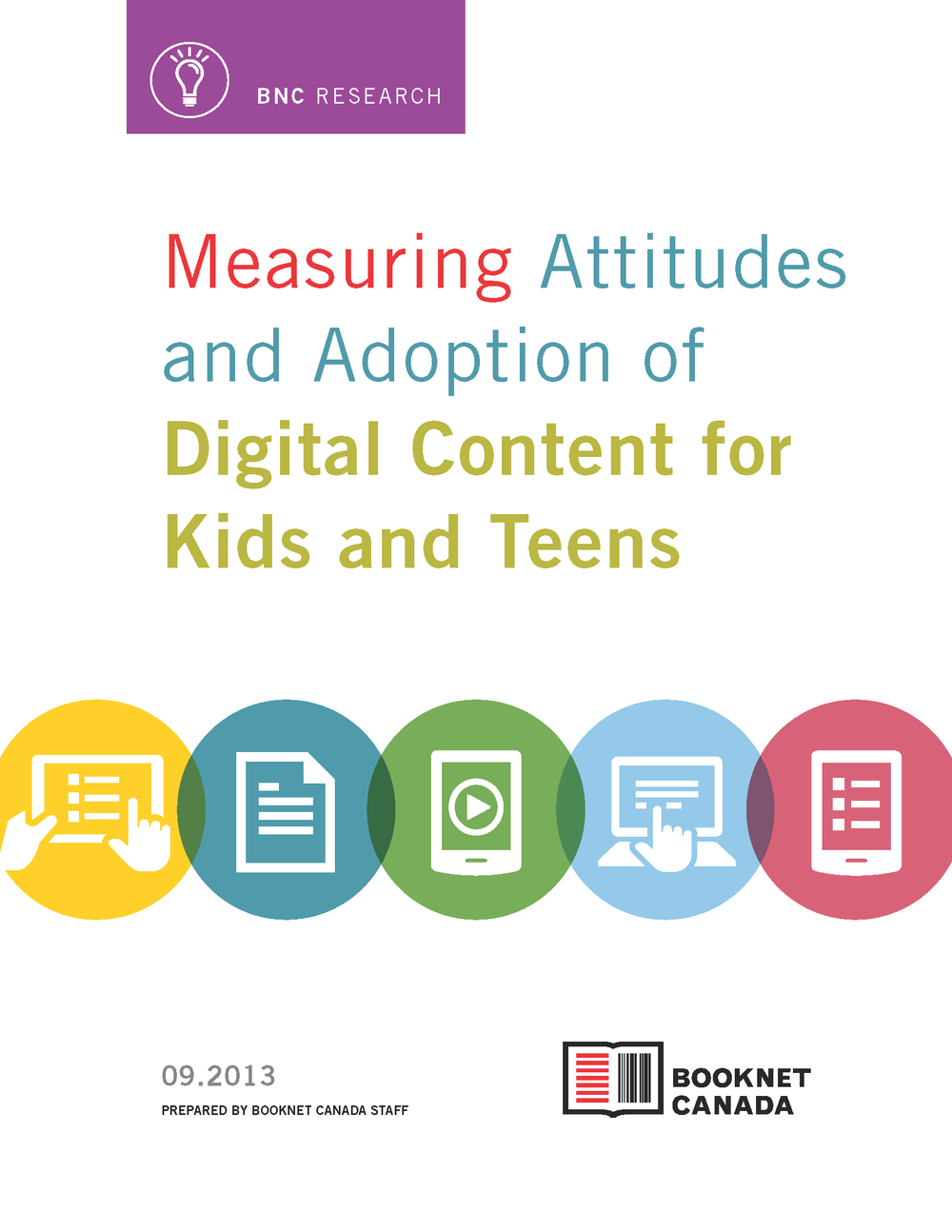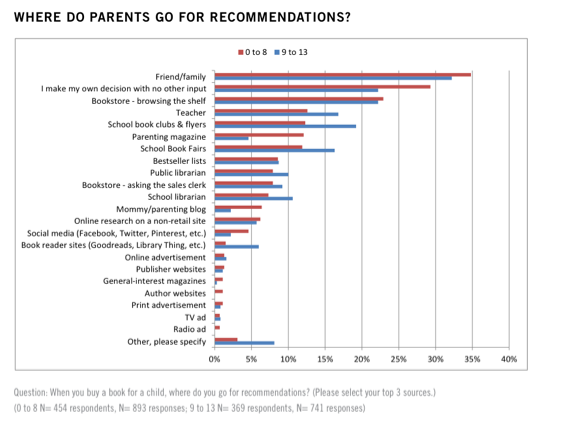 Last week, BookNet Canada released our first juvenile consumer study, Measuring Attitudes and Adoption of Digital Content for Kids and Teens. The objective of this study was to review parents’ and teens’ attitudes towards reading and technology, and examine how new behaviours and technologies are transforming the way families find, access, and consume the written word.
Last week, BookNet Canada released our first juvenile consumer study, Measuring Attitudes and Adoption of Digital Content for Kids and Teens. The objective of this study was to review parents’ and teens’ attitudes towards reading and technology, and examine how new behaviours and technologies are transforming the way families find, access, and consume the written word.
One of the focuses of our research was discoverability. Where do parents look to find new books for their children, and how do teens decide what to read next? How effective are digital marketing techniques like video book trailers, author websites, and social media posts?
We found that while word of mouth is still the most common way that parents and teens discover new books, there is a distinct shift, particularly for parents buying books for 9–13-year-olds, towards finding books through school sources such as teachers, school book clubs and flyers, and librarians.

Teens, of course, are bombarded with messaging on all sides, and many factors influence how they become aware of the books they read. Before they decide to read something new, teens hear about the book an average of 2.3 times from different sources. Most often, this contact comes in the form of in-person interactions, usually a recommendation from a friend or relative (26%). Other ways teens find out about books they read are through school (33%), the library (15%), and receiving them as gifts (13%).
Asked how they first found out about a recent title they read, almost 70% of teens said they had ‘definitely’ or ‘possibly’ received a recommendation from a friend or relative. The second most popular discovery factor was having read another book by the same author.
Other major influences are bookstores, libraries, and social networking sites such as Twitter and Facebook. While publisher and author websites ranked low with teens, 33% of respondents said they would like to visit the website of their favourite author in the future.
Not on the list? For both parents and teens, advertisements—print, TV, radio, or web—consistently ranked near the bottom of the list as both a discovery factor and an influence to purchase a book.
 Discoverability is only one of the angles on juvenile reading we tackled—if you want a taste of some of our other findings, our press release and infographic can tell you more. Still not satisfied? If you really want to get to know the next generation of digital readers, the full report is available for purchase right here on our site.
Discoverability is only one of the angles on juvenile reading we tackled—if you want a taste of some of our other findings, our press release and infographic can tell you more. Still not satisfied? If you really want to get to know the next generation of digital readers, the full report is available for purchase right here on our site.


